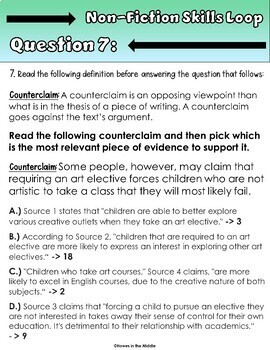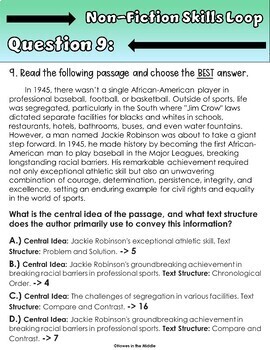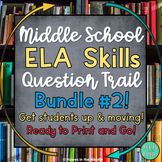Non-Fiction Reading Skills ELA Question Loop and Middle School Trail Game
- PDF
What educators are saying
Also included in
- Elevate your middle school ELA classroom with this captivating bundle of question trails/loops for middle school students! The loops included in this bundle cover a variety of ELA standards including figurative language, theme, informational reading skills, and more! Students will work with metaphPrice $10.00Original Price $13.25Save $3.25
Description
Elevate your classroom experience with this captivating Interactive ELA skills lesson that puts students at the center of their learning journey. This engaging activity offers a unique twist on traditional instruction, seamlessly blending rigorous questioning, collaborative problem-solving, and active movement. Ideal for middle school and high school students, this lesson provides a dynamic way to grasp essential non-fiction reading concepts while fostering teamwork and critical thinking.
I believe that it is so important to make learning fun and give learners a chance to move. In this rigorous and engaging activity, students review multiple informational reading ELA standards (central idea, text structure, picking the best evidence, and more). This active lesson makes learning fun, engaging, kinesthetic, and relevant. Save yourself a bunch of time and purchase this activity today!
Why Choose This Lesson?
- Engaging and Interactive: Captivate students' attention by transforming learning into an exciting adventure that breaks away from traditional methods.
- Critical Thinking and Analysis: Challenge students' critical thinking skills with thought-provoking questions that require in-depth analysis of story elements.
- Movement and Engagement: Keep students actively engaged and enthusiastic about learning by incorporating physical movement into the lesson.
- Versatile Application: This lesson can be tailored to fit various classroom settings and learning environments, making it adaptable to your unique teaching style.
Transform your classroom into a hub of active learning and critical thinking with this Interactive ELA skills Lesson. Say goodbye to traditional instruction and hello to an immersive experience that empowers students to explore plot, conflict, the inciting incident, and setting in a memorable and collaborative way. Elevate your teaching and engage your students with this innovative lesson - a must-have resource for any English Language Arts educator.
Unlock the power of interactive learning with this dynamic informational reading skills lesson today!
If you need to review a different topic, I have the following loops available:
⭐Other Question Trails/Loops:
⭐Figurative Language Loop Volume II
⭐Theme Loop for Upper Middle and High School
⭐Figurative Language in YA Lit
⭐Figurative Language in Literature and Music






